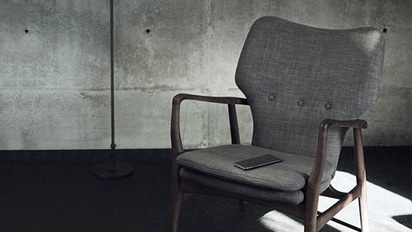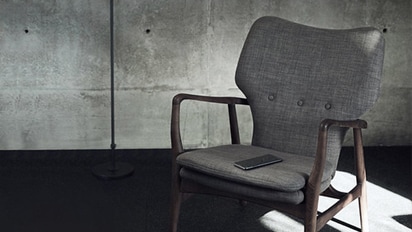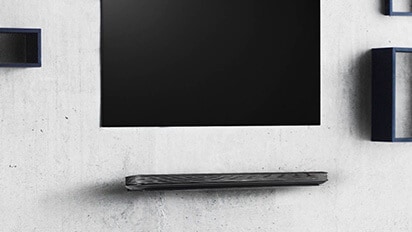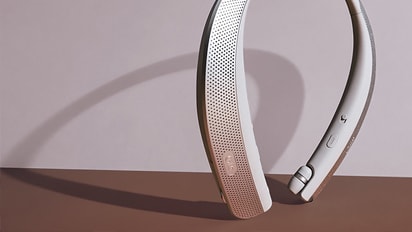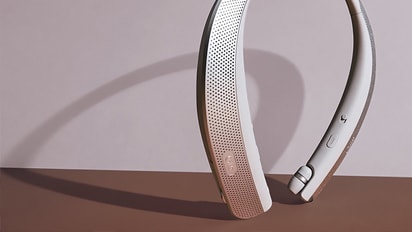At a Glance
When it’s hot outside, the last thing you want is for your air conditioner to stop cooling. Let's check a few things to see if we can quickly resolve the issue.
- Check our Cooling Tips section to enhance its performance.
- Split units and duct free air conditioners that are used in an office or industrial environment are considered business units and are not covered in this article, please visit LG Business - Air Conditioning Technologies.
Try This
-
Select the type of air conditioner you have:
-
Do you see any error code on the display screen?
Yes No -
Select the error code on your display:
If the error code on your unit is not listed here, refer to your owner's manual to resolve the model specific error code. Please visit our Documents and Manuals page to download a copy.
-
Does the unit cool at night, but NOT during the day?
Yes No -
If the unit cools properly during the night but not during the day, then the unit is working properly but we need to enhance its performance. Please visit our Cooling Tips section of this article.
-
If hot air from outside is getting into the room through the vent, it will prevent the unit from cooling properly. Let's check the vent using the following steps:
-
Inspect the end that connects to the air conditioner. It should be connected securely with no air escaping.
-
Ensure that nothing is inside the vent, such as packing material or accessories for the air conditioner.
-
Visually inspect the length of the duct for any holes or tears.
-
There should be no extensions added to the exhaust duct because the fan is not strong enough for longer lengths.
-
The vent should not be vented up through the ceiling. The humid air that is being exhausted may be too heavy to completely vent out.
-
Finally, check the end of the hose and make certain that it is connected to the vent panel in the window securely, and the window is sealed properly.
-
For more information, watch our Portable Air Conditioner - Installation video.
If the unit is still not cooling, we need to test the compressor.
Proceed to Compressor Test -
-
How to test the compressor:
-
Unplug the unit for at least 30 seconds. Use a timer if necessary.
Note: If the unit was not unplugged for at least 30 seconds, the unit's safety switch will prevent the compressor from turning on for 3 minutes.
-
Plug the unit back in.
-
Power the unit on.
-
Adjust settings: COOL mode, lowest temperature, highest fan speed.
-
Listen for the compressor, which may take up to 30 seconds to turn on.
Note: You should hear the sound of the compressor initially engaging and then a steady humming that can be heard over the fan.
Do you hear the compressor turn on?
Yes No -
-
Hold a hand in front of the unit for two or more minutes.
Does the air feel as if its cooling down?
Yes No -
This unit will require a repair service, please visit our Request a Repair page.
-
Great! The unit is cooling, but something is affecting its performance. For more information on how to maximize performance, visit our Cooling Tips section of this article.
-
Is the outdoor temperature above 95°F?
Yes No -
Extremely high temperatures will challenge the unit's performance. For more information on how to maximize performance, visit our Cooling Tips section of this article.
-
The unit will require a repair service. Please visit our Request a Repair page.
-
Do you see any error code on the display screen?
Yes No -
Select the error code on your display:
If the error code on your unit is not listed here, refer to your owner's manual to resolve the model specific error code. Please visit our Documents and Manuals page to download a copy.
-
Does the unit cool at night, but NOT during the day?
Yes No -
If the unit cools properly during the night but not during the day, then the unit is working properly but we need to enhance its performance. Please visit our Cooling Tips section of this article.
-
Check the FRESH AIR VENT.
This vent opens a small vent in the center wall of the air conditioner to allow fresh, outside air, into the room. This is counter-productive to cooling. Keep this vent CLOSED always.
Continue to Next Step -
Let's check the power supply.
The unit requires 208/230 volts and 20 amps to operate properly; if this criteria is not met, this may affect the units performance.
A few quick ways to identify if the unit does not have the appropriate power supply are:
-
when the outlet had to be changed to match the plug,
-
when an inverter or adapter is being used, or
-
if the fan will not change speeds when switching between high and low.
Check the power requirements for the unit. Does the unit have the correct power supply?
Yes No -
-
Then let's perform a quick compressor test to see if the compressor is working properly.
-
Unplug the unit for at least 30 seconds. Use a timer if necessary.
Note: If the unit was not unplugged for at lest 30 seconds, the unit's safety switch will prevent the compressor from turning on for 3 minutes.
-
Plug the unit back in.
-
Power the unit on.
-
Adjust settings: COOL mode, lowest temperature, highest fan speed.
-
Listen for the compressor, which may take up to 30 seconds to turn on.
Note: You should hear the sound of the compressor initially engaging and then a steady humming that can be heard over the fan.
Do you hear the compressor turn on?
Yes No -
-
There is a power supply problem that needs to be corrected. This may require the services of an electrician.
-
Hold a hand in front of the unit for two or more minutes.
Does the air feel as if its cooling down?
Yes No -
The unit will require a repair service, please visit our Request a Repair page.
-
Great! The unit is cooling but something is affecting its performance. For more information on how to maximize performance, visit our Cooling Tips section of this article.
-
Is the outdoor temperature above 95°F?
Yes No -
Extremely high temperatures will challenge the unit's performance. For more information on how to maximize performance, visit our Cooling Tips section of this article.
-
The unit will require a repair service. Please visit our Request a Repair page.
-
Split units and duct free air conditioners that are used in an office or industrial environment are considered business units and are not covered in this article, please visit LG Business - Air Conditioning Technologies.
When the unit is struggling to perform, often the cause is something small and easily overlooked. Let's check the following:
-
The unit must be sized for the space. If the unit is too small OR too big, it will not cool efficiently.
-
If the unit is too big it will short cycle, turning on and off repeatedly while not cooling the room effectively.
BTU to Square Footage Conversion Chart
7,000 BTU: 200 Sq Ft
8,000 BTU: 200 Sq Ft
10,000 BTU: 300 Sq Ft
11,000 BTU: 450 Sq Ft
12,000 BTU: 400 Sq Ft
13,000 BTU: 500 Sq Ft
14,000 BTU: 600 Sq Ft
-
There must be at least 20 inches of open space around the unit.
-
To maximize airflow and cooling performance, place the portable air conditioner as close to the center of the room as possible.
-
The air filter should be cleaned at least every 2 weeks. It may be necessary to do so more often, depending on the environment.
-
The number of filters will vary by model. Some models can have up to four filters, one at the top and one at the bottom, and one on each side of the air conditioner. Be sure to clean both of them regularly.
-
Don't turn the unit off during the day, but rather just raise the temperature. This will allow the unit to maintain a more stable temperature, and allow it to cool more efficiently once the temperature setting is decreased.
When the unit is struggling to perform, often the cause is something small and easily overlooked. Let's check the following:
Bigger is not better! The air conditioner must be sized properly for the space it is cooling.
-
If the unit is too big it will short cycle, turning on and off repeatedly while not cooling the room effectively.
-
If the unit is too small, it will not cool as efficiently.
-
Don't turn the unit off during the day, but rather just raise the temperature. This will allow the unit to maintain a more stable temperature, and allow it to cool more efficiently once the temperature setting is decreased.
-
If the air conditioner is exposed to direct sunlight, put some shade on it!
-
If exposed to direct sunlight, the air conditioner will get very hot and have difficulty discharging the heat. It may be necessary to cover the unit with an awning.
Clean the Air Filter
The air filter should be cleaned at least every 2 weeks. It may be necessary to do so more often, depending on the environment.
Clean the OUTSIDE Coils
-
Dust, pollen, and other environmental particulates buildup on these coils, and prevent proper cooling.
-
Use a garden hose and bristled brush to gently clean the coils. Or, you can check your local hardware store for air conditioner coil cleaner. Some cleaners are no rinse, so just spray it on and let it do its job.
When the unit is struggling to perform, often the cause is something small and easily overlooked. Let's check the following:
-
Bigger is not better! The air conditioner must be sized properly for the space it is cooling. A unit that is too big will not cool as efficiently.
-
If the unit is too big it will short cycle, turning on and off repeatedly while not cooling the room effectively.
Don't turn the unit off during the day, but rather just raise the temperature. This will allow the unit to maintain a more stable temperature, and allow it to cool more efficiently once the temperature setting is decreased.
-
If the air conditioner is exposed to direct sunlight, put some shade on it!
-
If exposed to direct sunlight, the air conditioner will get very hot and have difficulty discharging the heat. It may be necessary to cover the unit with an awning.
Clean the Air Filter
The air filter should be cleaned at least every 2 weeks. It may be necessary to do so more often, depending on the environment.
Clean the OUTSIDE Coils
-
Dust, pollen, and other environmental particulates buildup on these coils, and prevent proper cooling.
-
Use a garden hose and bristled brush to gently clean the coils. Or, you can check your local hardware store for air conditioner coil cleaner. Some cleaners are no rinse, so just spray it on and let it do its job.









